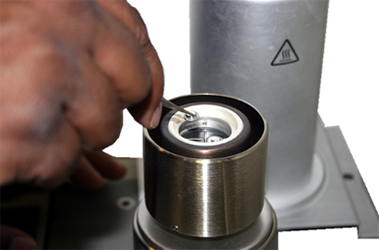
Differential Scanning Calorimetry is a technique in which the difference of energy inputs (heat flow) required to keep a substance and a reference material at the same temperature is measured as a function of temperature while the sample and reference material are subjected to a controlled heating program.
The DSC is a good screening tool for evaluating the thermal stability of homogeneous materials at temperatures ranging from -90°C to 500 °C. This piece of equipment evaluates milligram size samples and therefore is not always appropriate for heterogeneous mixtures as sampling can become an issue. In addition to screening tests, the DSC can be used to perform several ASTM test methods.
Thermogravimetric analysis is used to monitor changes in weight as a function of temperature. At Fauske & Associates, LLC (FAI), we have traditional TGAs as well as an instrument that is capable of measuring weight changes and heat flow simultaneously and is, therefore, referred to as an SDT, or Simultaneous DSC-TGA. The added ability to monitor heat flow is especially useful for determining if the weight change is associated with either an endothermic or exothermic reaction. Like the DSC, these instruments are used to evaluate milligram size samples and are best suited for homogeneous mixtures. However, the TGA is capable of evaluating materials at temperatures ranging from ambient to 1400°C. The following is a list of ASTM test methods that can be performed using this equipment:
The ARC provides thermal hazard evaluation of products, reaction mixtures, and intermediates. The experimental results are used for reactor and pilot plant safety analysis. It determines the relationship between time, temperature, and pressure for exothermic reactions. Testing is conducted following ASTM standard E 1981, “Standard Guide for Assessing the Thermal Stability of Materials by Methods of Accelerating Rate Calorimetry.” Thermal and pressure hazard parameters related to ARC data include:
Print this page
